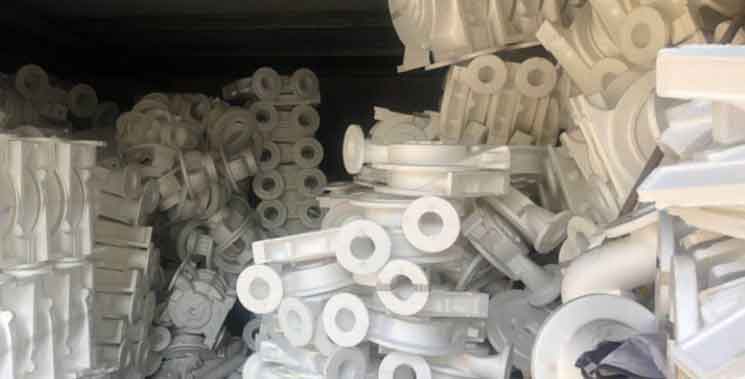
Lost foam casting is a complex process that involves several steps, from initial design to the final production of castings. Here’s a step-by-step guide to the lost foam casting process:
Step 1: Pattern Design and Creation:
- The process starts with designing the pattern of the desired casting using computer-aided design (CAD) software. The pattern is then fabricated using expanded polystyrene (EPS) foam, which is easily shaped and carved into intricate forms.
Step 2: Pattern Assembly and Coating:
- Multiple foam patterns, representing different parts of the final casting or multiple components, are assembled together to create a cluster or tree-like structure. The assembled pattern is then coated with a refractory material, such as a slurry of ceramic or silica, creating a thin shell around the foam pattern. This coating serves as the mold for the casting.
Step 3: Sand Molding and Flask Placement:
- The coated foam pattern cluster is placed in a flask or box. Dry sand is then tightly packed around the coated pattern, ensuring that it fills all the voids. The flask and pattern assembly are then compacted to improve sand density and minimize defects.
Step 4: Foam Vaporization and Casting:
- Molten metal is poured directly into the mold. The high temperature of the metal causes the foam pattern to vaporize rapidly, leaving behind a cavity in the shape of the desired casting. The molten metal fills the void left by the vaporized foam, taking on its exact shape.
Step 5: Cooling and Solidification:
- After casting, the metal inside the mold begins to cool and solidify. The cooling rate and solidification process can be controlled through the selection of materials and mold design to optimize casting properties.
Step 6: Shakeout and Cleaning:
- Once the casting has solidified and cooled, the mold is removed by shaking or breaking it away. The casting is then cleaned to remove any remaining sand or refractory material.
Step 7: Finishing and Inspection:
- The casting may undergo additional finishing processes, such as grinding, cutting, or machining, to achieve the desired surface finish and dimensional accuracy. The finished casting is inspected for any defects or imperfections.
Step 8: Post-Casting Heat Treatment (Optional):
- Depending on the specific application and material requirements, the casting may undergo post-casting heat treatment to improve its mechanical properties and remove residual stresses.
Step 9: Quality Control and Testing:
- The final castings are subjected to quality control checks, including non-destructive testing, dimensional inspection, and material analysis, to ensure they meet the required specifications and quality standards.
Step 10: Final Product Application:
- The finished castings are ready for use in their intended applications, such as automotive components, aerospace parts, industrial machinery, or other engineered products.
The lost foam casting process offers several advantages, such as design flexibility, near net shape casting, and complex geometries. However, it also requires skilled craftsmanship, precise process control, and attention to detail to achieve high-quality castings.
